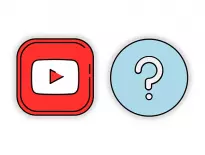Digital publishers serve content to online communities of all kinds.
When most people think of e-publishing, the first thing that comes to mind is a blog or an ebook.
But e-publishing goes far beyond digital print. Virtually every content format available online owes its placement to a publisher. That includes video, audio, video games, mobile apps, and more.
All of that digital media has to get to the public somehow. The act of distributing media for public access is publishing. These organizations include everything from blogs to e-learning companies and advertisers. The particulars vary for each industry, but the need for digital publishing services remains constant.
How E-Publishers Collect and Distribute Media
E-publishers are responsible for distributing media to an audience. They rarely have a direct hand in creating the media itself, but many publishers work closely with content creators to cultivate and monetize their audience successfully.
In industries where the process of creating content is expensive and time-consuming, it’s common for publishers to advance money to creators and collect royalties on the proceeds. This is common practice for Hollywood film publishers and Triple-A video game publishers.
Publishers will often use their reputation and experience to cultivate audiences in a particular way. A digital publisher with a legacy of distributing high-quality content for a niche market is a reliable source of data for that market.
Most of the time, the publisher’s main priority is helping content creators access relevant audiences. Publishers analyze data to find out what types of content their audience values most, and then find creators who are making that content.
When digital media publishers interact with content creators, their negotiations often focus on the value of the audience in a well-defined niche. Digital publishers are interested in serving their audiences the most valuable and compelling content they can find. Content creators want to reach those audiences, and have to go through publishers to do it.
How Publishers Use Content to Capture Audience Attention
Digital publishers do not always make their own content, but they do have a great deal of control over how they deliver content to audiences. In many cases, the delivery is what makes the difference.
For example, the Weather Channel is a well-known publisher that delivers weather and climate data to a huge number of users. It has a long history of providing accurate local forecasts and covering weather-related natural disasters on television. It’s digital publishing division takes a different form than its cable TV footprint.
One of the ways the Weather Channel optimizes its digital content is by enhancing weather data and disaster coverage using immersive computer-generated graphics to create stunning presentations. These short video clips use Weather Channel content in a more prominent, Internet-friendly way than the company’s broader cable news channels.
This approach showcases the power that publishers have when showing content to audiences. By carefully changing the way media is presented and pairing different types of content together, they can create compelling narratives that draw audiences in.
Digital Advertising Publishers: Mobile Marketing Partners
In the world of mobile marketing, publishers provide inventory that allows advertisers to run content on apps and mobile websites. These publishers sell space on apps and websites to buyers and agencies, who then place advertising materials on that space.
Digital advertising publishers operate in a wide variety of domains, from OTT apps to mobile games and e-commerce platforms. In each case, they target audiences through the software they offer to users and try to find advertisers who create the best content for those users.
In the past, assigning value to ad content was incredibly difficult. Publishers did not have the technology to track advertising engagement in a robust way. Most publishers simply gave space to whichever advertisers were willing to pay the most for the space.
Now, digital advertising publishers are very careful about the space they make available to content creators. They understand that repetitive or irrelevant ads are annoying for users, while well-targeted ones delight users and earn better returns.
There is a great deal of competition in the digital ad publishing industry. Ad publishers rely on user engagement data to determine which ads to show to users. If users express interest in a certain product or service, publishers will show ads about that product or service to those users whenever possible.
How Digital Advertising Publishers Make Money
Digital advertising publishers make money by displaying ads. They typically operate as part of an advertising network, which connects developers and agencies with the publisher, who makes their “inventory” available for advertisers to purchase and use.
There are four major types of pricing models that publishers, advertisers,, and networks use to monetize ad content:
1. Cost per Install (CPI)
One of the most common ways to purchase advertising content is through the CPI model. This model pays publishers a set amount every time a user installs the application being advertised. The cost varies from app to app. In most cases, advertisers and publishers will agree on a sum based on the estimated lifetime value of the average user.
Under this pricing model, the network will also receive a percentage of the CPI price. This incentivizes networks to find the best publishers for the ad campaigns they run.
2. Cost per Click (CPC)
Under the CPC model, advertisers pay a small sum to the publisher every time a user clicks on an ad. This model was once extremely popular, but it has gradually fallen out of favor because clicks are not a valuable, reliable metric for advertisers. It is difficult to predict how many clicks will turn into actual conversions, and traffic volume raises the overall price of acquiring new users.
This pricing model can be highly lucrative for publishers. Some publishers can leverage highly developed audiences to successfully demand CPC compensation from advertisers.
3. Cost per Mille (CPM)
A “mille” is equivalent to 1000 advertising impressions. The CPM pricing model compensates publishers based on the number of people who see the ad in question. This makes it a balanced option for advertisers whose content does not include a specific call to action. This is often the case for campaigns that focus on branding awareness.
Of the four major pricing models that digital advertising publishers use, this is the only one that has its origins in traditional advertising. Large format billboard owners charge between $3 and $18 for every thousand impressions.
4. Cost per Action (CPA)
The CPA model charges advertisers after users complete a certain task. It’s up to advertisers and publishers to define that task. It could be signing up for a newsletter, starting a new account on a service, or buying a product. This choice puts pressure on publishers and networks to deliver results, ensuring that advertisers receive the value they are looking for from audiences.
How E-Publishers Manage Digital Content Successfully
Digital publishing companies need to accurately gauge the value of their inventories and keep track of how users interact with content. Digital inventory is far more flexible than traditional media, since digital publishers can collect and analyze user engagement data in real-time.
In order to capture and analyze user engagement data, digital publishers need to incorporate analytics into the assets they make available to their audience. This is something neither content creators, advertisers, nor networks can do – publishers host the content, so publishers must collect and interpret the data.
Most publishers do this by deploying purpose-built digital asset management (DAM) solutions. These are media and video hosting platforms that include a wide range of special features designed for the digital publishing industry. They collect user engagement data on an individual basis and make it possible for publishers to generate comprehensive reports on that data.
As digital publishers grow, centralizing video and image management becomes more challenging. High-performance DAM solutions give publishers the ability to index videos and images according to content, making management much less time-consuming as well.
Cincopa’s DAM platform gives publishers the analytics capabilities they need to accurately interpret user engagement on a granular level. Find out how individual users interact with the video content you host with our help.








